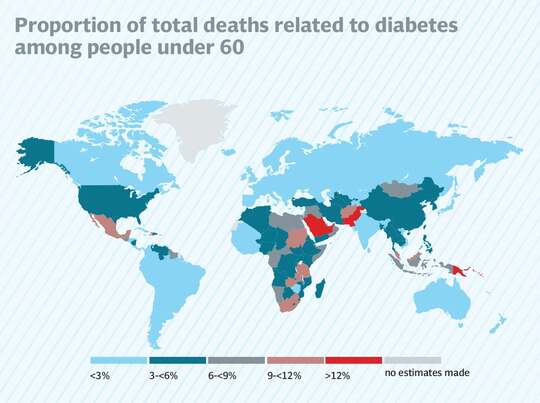It may seem paradoxical, but despite widespread poverty, obesity rates in Pakistan are alarmingly on the rise. According to data from the World Health Organization, 58.1% of Pakistanis are classified as overweight, with 43.9% considered obese. Furthermore, around 40% of children in Pakistan are either overweight or obese. Globally, in 2022, one in eight people were living with obesity, with 43% of adults aged 18 and over being overweight, and 16% living with obesity.
Why Obesity Matters
Obesity is not just a cosmetic concern; it is a significant health risk. It serves as a primary factor for various health conditions prevalent in society. “Obesity is the root cause of not only insulin resistance and diabetes but also numerous other problems such as hypertension, heart disease, vascular disease, high cholesterol, stroke, arthritis, and more,” explains Dr. Fatema Jawad, Consultant Diabetologist at SIUT.
The International Diabetes Federation reported in 2021 that Pakistan had the highest diabetes prevalence rate globally at 30.8%. The comparative prevalence of diabetes in Pakistan has risen dramatically, with 33 million adults now living with diabetes. One in four adults (26.7%) in Pakistan has diabetes, the highest national prevalence worldwide. An additional 11 million adults have Impaired Glucose Tolerance (IGT), putting them at high risk of developing type 2 diabetes. Pakistan also records the highest proportion of deaths (35.5%) under the age of 60 due to diabetes.
Contributing Factors to Obesity
Several factors contribute to the growing obesity epidemic in Pakistan, with the most significant being poor eating habits and lifestyle choices. “We are eating wrong; we are not eating the right things at the right time. Often, we eat simply because there’s nothing else to do,” says Dr. Jawad.
Whether it’s a social celebration, hosting guests, or a family outing, food is central to every occasion—from snacks to fast food to oil-laden local cuisine consumed at late-night gatherings and weddings. People often go to bed immediately after these meals, without giving their bodies time to digest the food. The typical Pakistani diet consists of wheat bread and curry, with a little meat but a lot of oil and spices to enhance flavor, leading to high-calorie intake.
Another major factor is the consumption of sugary drinks, particularly during the hot weather, often encouraged by advertising. “Sugary drinks like lemonade, sugarcane juice, packaged juices, and soft drinks are consumed without a second thought to their sugar content and calorie load,” Dr. Jawad notes. These advertisements emphasize the refreshing nature of these drinks but fail to mention their adverse health effects.
Additionally, a sedentary lifestyle contributes significantly to obesity. Regular exercise is not a common practice. Many people spend hours sitting at work and then in front of the TV, with even children spending most of their free time on screens. The lack of parks and playgrounds forces children to stay indoors with gadgets. For those who want to exercise, options are limited—there are few walking tracks, and concerns about safety deter people from walking on the roads.
The Health Risks of Obesity
Experts warn that obesity, particularly the accumulation of visceral fat around the abdomen and organs, can lead to chronic inflammation in the body. This inflammation is linked to insulin resistance, type 2 diabetes, and cardiovascular diseases. A waist measurement of 40 inches or more for men and 35 inches or more for women is associated with insulin resistance, even if their Body Mass Index (BMI) falls within the normal range.
Lack of physical activity is also associated with insulin resistance and prediabetes. Regular physical activity induces bodily changes that help maintain balanced blood glucose levels.
Understanding Insulin Resistance
“Insulin resistance occurs when the body’s cells fail to respond effectively to insulin, which is vital for converting food into energy or storing that energy for later use,” explains Dr. Jawad. In response, the pancreas produces more insulin. However, despite high levels of insulin in the blood, it remains ineffective due to resistance, leading to elevated blood sugar levels.
The primary factors contributing to insulin resistance are excess body fat, particularly around the abdomen, and a sedentary lifestyle. Social and biological factors, such as age, high blood pressure, abnormal cholesterol levels, family history of type 2 diabetes, and certain medical conditions like PCOS, also increase the risk.
Medications like steroids can also cause insulin resistance, leading to secondary diabetes. “Steroids are often prescribed for asthma and certain kidney conditions, increasing the risk of secondary diabetes,” adds Dr. Jawad.
Symptoms and Diagnosis of Insulin Resistance
“There are no obvious symptoms of insulin resistance. However, if you notice weight gain, particularly around the belly, it may indicate central obesity,” says Dr. Jawad. Over time, as the pancreas struggles to produce enough insulin to overcome resistance, symptoms like increased thirst, frequent urination, hunger, blurred vision, headaches, skin infections, and slow-healing wounds may appear.
Diagnosing insulin resistance is challenging due to the lack of symptoms and routine testing. However, if there is a family or medical history of the condition and weight gain is observed, testing for blood sugar levels is advisable.
Complications of Insulin Resistance
The impact of insulin resistance varies from person to person. In many cases, it leads to high blood sugar (hyperglycemia) and diabetes. Other potential complications include ketoacidosis, skin conditions, heart disease, kidney disease, high blood pressure, stroke, neuropathy, and eye complications like retinopathy and vision loss.
For example, Zehrish experienced significant health issues due to undiagnosed insulin resistance. Initially diagnosed with thyroid problems as a child, she faced challenges after moving to the UK, where she struggled with weight gain, fatigue, and puffiness. After two miscarriages, she was eventually diagnosed with both PCOS and insulin resistance. Despite conflicting medical advice, she managed her insulin resistance with lifestyle changes and medication, leading to the birth of her healthy child.
Reversing Insulin Resistance
The good news is that insulin resistance is reversible. “Although there are medications to reverse it, a healthy lifestyle, including a balanced diet, regular exercise, and proper sleep, is the most effective way to combat insulin resistance,” advises Dr. Jawad.
Rabia’s story is a testament to the success of reversing insulin resistance. After being diagnosed as pre-diabetic following Covid-19, she embarked on a challenging journey to cut down on sugar and starch and committed to daily exercise. Nine months later, she reversed her pre-diabetes and lost 10 kg, achieving normal blood sugar levels.
Rabia’s experience underscores the importance of perseverance in overcoming insulin resistance. The best approach includes weight loss, a diet rich in vegetables, fruits, whole grains, fish, and lean poultry, regular physical activity, and adequate sleep.
“If you want to reverse insulin resistance, you need to normalize your lifestyle—not change it, but normalize it,” emphasizes Dr. Jawad.





